The god of war of the Wehrmacht. Light field howitzer le.FH18
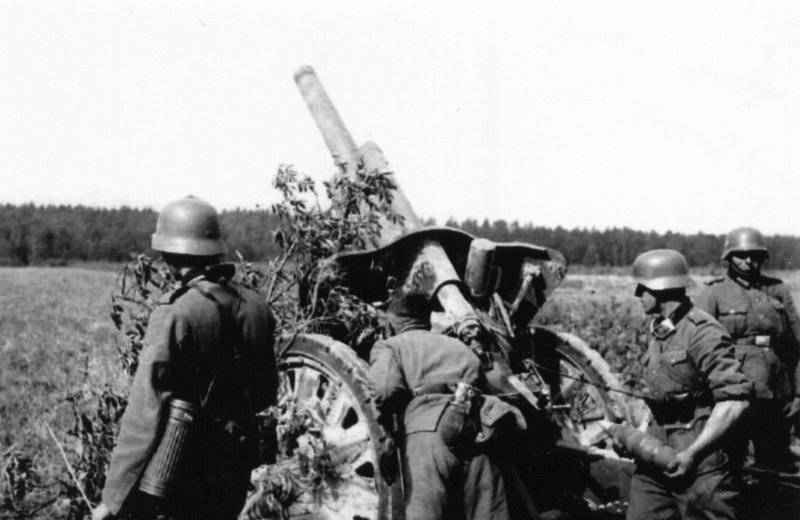
History create
Versailles is the name that in 1920-ies. First of all, it was associated with the 1918 peace treaty. One of the results of the First World War was the elimination of the military power of Germany. The winners took care of this. Particular attention was paid to artillery. Germany was forbidden to have heavy artillery, and in the field park only two types of artillery systems were left - the 77-mm cannon FK 16 and the 105-mm light howitzer le.FH 16. The number of the latter was limited to 84 units (at the rate of 12 units per each of the seven divisions of the Reichswehr), and their ammunition should not exceed 800 projectiles per barrel.
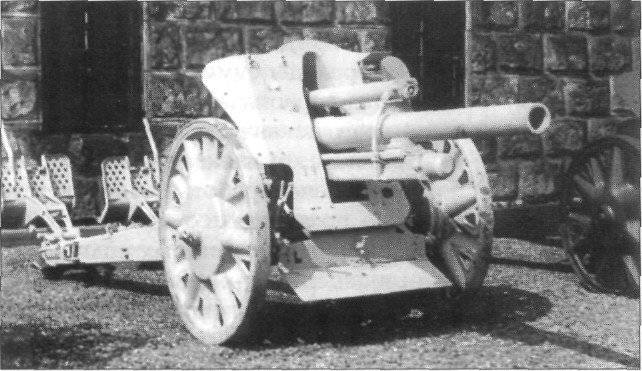
Such a decision was contrary to the experience gained by the German army during the Great War. By the beginning of hostilities, the field artillery of the German divisions (as well as the French and Russian) consisted mainly of light cannons, ideally suited for a maneuvering war. But the transition of hostilities to the positional phase revealed all the shortcomings of these artillery systems, primarily the flat trajectory of fire and the low power of the projectile, which in the aggregate did not make it possible to effectively strike field fortifications. The German command quickly learned the lessons, quickly equipping the troops with field howitzers. If the ratio of the number of guns to howitzers in 1914 was 3: 1, then in 1918, only 1,5: 1. The Versailles treatise meant a setback not only in the absolute number of howitzers, but also in the specific weight of these guns in the Reichswehr artillery park. Naturally, this situation in no way satisfied the military leadership of Germany. Already in the middle of 1920's. it was clearly recognized that the need for qualitative improvement of artillery, if not quantitative, especially as the le.FH16 howitzer was gradually becoming obsolete.
The Versailles Treaty allowed Germany to routinely produce a number of artillery systems to compensate for losses due to wear. Regarding 105-mm howitzers, this number was determined in 14 guns per year. But it was not the quantitative indicators that were important, but the very possibility in principle of preserving the artillery industry. There were design bureaus at the Krupp and Rheinmetall firms, but their activities were hampered by the presence of inspectors of the Inter-Allied Military Control Commission. This commission officially completed its work on 28 in February of 1927. Thus, the path to the creation of new artillery systems was opened, and on June 1 of the same year, the Army Armaments Division (Heerswaffenamt) decided to start developing the improved version of le.FH 16.
Work on the howitzer was carried out by the concern “Rhinmetall”. Almost immediately it became clear that the weapon would be truly new, and not just a modification of the previous sample. The main improvements were dictated by the requirements of the military to increase the firing range and the angle of the horizontal focus. To solve the first problem, a trunk of greater length was used (initially 25 calibers, and in the final version - 28 calibers). The second problem was solved by applying a carriage of a new design, based on a similar node of the WFK long-range cannon that did not go into the 75-series.
By 1930, the development of a new howitzer was completed, and testing began. And the design, and tests were conducted in an atmosphere of strict secrecy. In order to disguise the fact of creating a new artillery system, she was given the official name 10,5 cm leichte Feldhaubitze 18 - 10,5-cm light field howitzer mod. 1918 g., Or abbreviated le.FH 18. Officially, the gun was adopted by 28 July 1935.
First option
The gross production of howitzers le.FH 18 began in 1935. At first it was carried out by the Rheinmetall-Borsig factory in Düsseldorf. Subsequently, the release of howitzers started at the enterprises in Borsigvald, Dortmund and Magdeburg. By the beginning of World War II, the Wehrmacht received over 4000 le.FH 18, and the maximum monthly production was 115 units. It is interesting to compare the labor intensity of manufacturing and the cost of field tools produced at that time in Germany.
As we can see, in economic terms, the le.FH 18 significantly exceeded not only the heavier artillery systems (which is quite logical), but even the 75-mm cannon.
The barrel of the new howitzer was longer than its predecessor (le.FH16), on 6 calibers. Its length was 28 gauges (2941mm). That is, according to this indicator, le.FH 18 can be quite attributed to howitzers-guns. In constructive terms, the trunk was a monoblock with a screwed bolt part. The shutter is wedge horizontal. Right-side barrel cutting (32 rifling). The recoil device is a hydraulic device (the thumb wheel is hydropneumatic).
Thanks to the longer barrel, it was possible to significantly improve the ballistic characteristics: the initial velocity of the projectile when using the most powerful charge was 470 m / s versus 395 m / s in le.FH 16. Accordingly, the firing range has increased - from 9225 to 10675 m.
As already noted, in le.FH 18 used carriage with sliding beds. The latter had a riveted design, a rectangular section and equipped with openers. The use of such a mast allowed us to increase the angle of horizontal pickup compared to le.FH 16 in 14 (!) Times - from 4 to 56 °. The angle of the horizontal (so in the text, we are talking about the angle of the vertical pickup, approx. Air Force) pickup slightly increased to + 42 ° vs. + 40 °. In the prewar years, such indicators were considered quite acceptable for howitzers. As you know, you have to pay for everything. So for the improvement of fire data had to pay weight. The weight of the le.FH 18 in the stowed position increased compared to its predecessor by more than six centners and reached almost 3,5 t. Mechanical thrust could not be more appropriate for such an instrument. But the automotive industry did not keep pace with the Wehrmacht, which grew like a weed. Therefore, the six-ton sled was the main means of transporting most light howitzers.
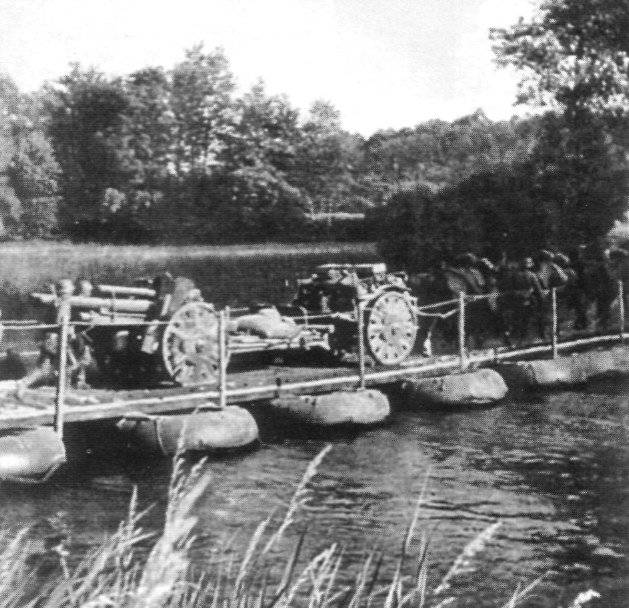
The first serial le.FH 18 were completed with wooden wheels. Then they were replaced by light alloy wheels with a diameter of 130 cm and a width of 10 cm, with 12 relief holes. The wheel course was sprung and equipped with a brake. Wheels of howitzers, towed by horse-drawn, were supplied with steel tires, over which rubber bands were sometimes put on. For batteries on mechanical brakes used wheels with solid rubber tires. Such an instrument was towed (without a front end) by a semi-tracked tractor with a speed of up to 40 km / h. Note that horse artillery needed a whole day of march to overcome the same 40 km.
In addition to the base case for the Wehrmacht, an export version was prepared, ordered in 1939, the Netherlands. The Dutch howitzer differed from the German one with a slightly lower weight and even more increased shelling angles - up to + 45 ° in the vertical plane and 60 ° in the horizontal. In addition, it was adapted for firing Dutch-style ammunition. Due to the workload of the Rheinmetall enterprises, the production of howitzers for export was carried out by the Krupp concern plant in Essen. After the occupation of the Netherlands in 1940, around 80 howitzers were captured by the Germans as trophies. After the change of their trunks adopted by the Wehrmacht under the designation le.FH 18 / 39.
Ammunition
For firing 105-mm howitzer le.FH 18 used six charges. The table shows the data when firing a standard high-explosive fragmentation projectile weighing 14,81 kg.
In howitzer ammunition included a fairly wide range of shells for various purposes, namely:
- 10,5 cm FH Gr38 - standard high-explosive fragmentation projectile weighing 14,81 kg with a charge of trinitrotoluene (TNT) weighing 1,38 kg;
- 10,5 cm Pzgr - the first version of an armor-piercing projectile weighing 14,25 kg (weight TNT 0,65 kg). For shooting used charge number 5. The initial speed was 395 m / s, the effective range of a direct shot - 1500 m;
- 10,5 cm Pzgr rot - modified armor-piercing projectile with a ballistic tip. The weight of the shell 15,71 kg, BB - 0,4 kg. When shooting with charge No. 5, the initial speed was 390 m / s, armor penetration at a distance of 1500 m at an encounter angle of 60 ° - 49 mm;
- 10,5 cm Gr39 rot HL / A - cumulative projectile weighing 12,3 kg;
- 10,5 cm FH Gr Nb - the first version of a smoke projectile weighing 14 kg. During the explosion, he gave a cloud of smoke with a diameter of 25 — 30 m;
- 10,5 cm FH Gr38 Nb - advanced smoke projectile weighing 14,7 kg;
- 10,5 cm Spr Gr Br - incendiary projectile weighing 15,9 kg;
- 10,5 cm Weip-Rot-Geshop - propaganda projectile weighing 12,9 kg.
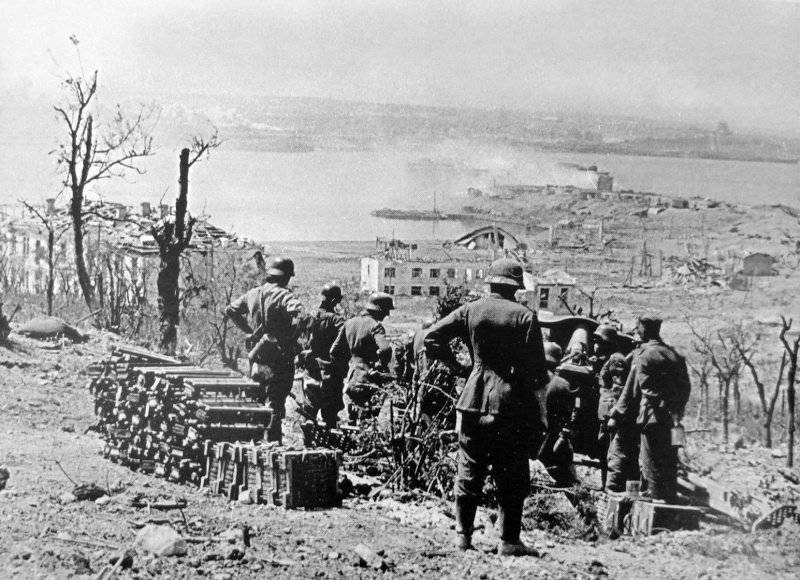
Advanced Modifications
The experience of the first months of the Second World War clearly showed that the light howitzer le.FH18 is quite effective weapon. But at the same time in the reports from the front there were complaints about the insufficient firing range. The simplest solution to this problem was to increase the initial velocity of the projectile due to the use of a more powerful propellant charge. But this made it necessary to reduce the strength of the rollback. As a consequence, in 1940, the production of a new howitzer equipped with a dual-chamber muzzle brake began. This system was designated le.FH18M (M - from Mündungsbremse, i.e. muzzle brake).
The length of the barrel le.FH18M with a muzzle brake was 3308 mm versus 2941 mm in the base model. The weight of the gun also increased by 55 kg. Especially for shooting at a maximum range, a new high-explosive fragmentation projectile 10,5 cm FH Gr Fern weighing 14,25 kg was developed (the weight of TNT is 2,1 kg). When firing charge number 6 initial speed was 540 m / s, and the firing range - 12325 m.
Production of the le.FH 18M lasted until February 1945. In total, 6933 produced such tools (this number included a number of howitzers of the basic model, released after the start of the Second World War). In addition, during the repair of a new barrel with a muzzle brake and received howitzers le.FH 18.
The appearance of the next option was also dictated by the experience of military operations — this time on the Eastern Front, where relatively heavy le.FH18 lost their mobility in off-road conditions. Even three- and five-ton semi-tracked tractors could not always overcome the autumn thaw of 1941, to say nothing of horse sledding. As a result, in March 1942, the technical task for the design of a new, lighter carriage for 105-mm howitzers was formulated. But creating it and putting it into production took time. In such a situation, the designers went on improvisation by putting a le.FH18M howitzer barrel on the carriage of an 75-mm anti-tank Cannon 40 anti-tank gun. The resulting “hybrid” was adopted under the designation le.FH18 / 40.
The new gun had almost a quarter of a ton less weight in the combat position than the le.FH18M. But the anti-tank gun carriage, due to the small diameter of the wheels, did not allow fire to be introduced at maximum elevation angles. I had to use new wheels of larger diameter. The muzzle brake design was also changed, because the old one, “inherited” from le.FH18M, was badly damaged when firing new sabot 10,5 cm Sprgr 42 TS. All this delayed the start of the serial production of le.FH18 / 40 until March 1943, when they released the first batch of ten units. By July, 418 new howitzers had already been delivered, and by March 1945 had already produced 10245 le.FH18 / 40 (only 1944 produced 7807 of such guns!). The production of le.FH18 / 40 was carried out by three factories - Schihau in Elbing, Menk and Hambrock in Hamburg and Krupp in Markstadt.
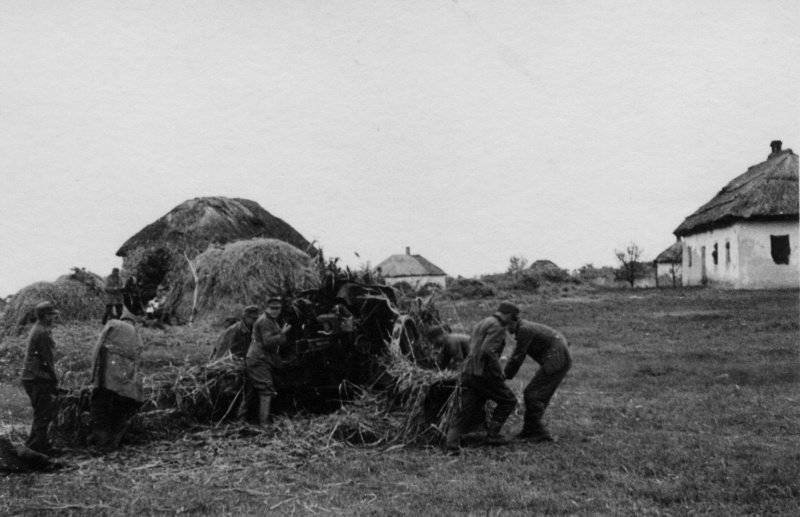
Intended replacement
The adoption of the le.FH18 / 40 howitzer was considered a palliative: the gun carriage used in it was developed for the 1,5 t gun, and with the imposition of a howitzer barrel it was overloaded, which led to numerous breakdowns of the undercarriage during operation. Over the new howitzer caliber 105 mm continued the work of the designers of the firms "Krupp" and "Rheinmetall-Borzig."
The Krupp howitzer prototype, designated le.FH18 / 42, was distinguished by an elongated barrel with a new muzzle brake to 3255 mm. The firing range increased slightly - to 12700 m. Just slightly (to 60 °) the horizontal angle of fire increased. The Army Armaments Division rejected this product, noting that there was no fundamental improvement in firing characteristics compared to le.FH18M and an unacceptable increase in system weight (over 2 tons in combat position).
The Rheinmetall prototype looked more promising. The gun le.FH42 had an 13000 firing range and a horizontal firing angle of 70 °. In this case, the weight in the combat position amounted to only 1630 kg. But in this case, the Armament Division decided to refrain from serial production. Instead, the development of more “advanced” projects of Krupp and Skoda firms continued. In these howitzers used completely new carriages, providing all-round fire. But in the end, the Krupp system was never embodied in the metal.
In Pilsen, the work of the Skoda plant was more successful. They built a prototype of a new howitzer le.FH43, but did not have time to introduce it into production. Thus, le.FH18 and its modifications were destined to remain the basis of the Wehrmacht field artillery until the end of the war.
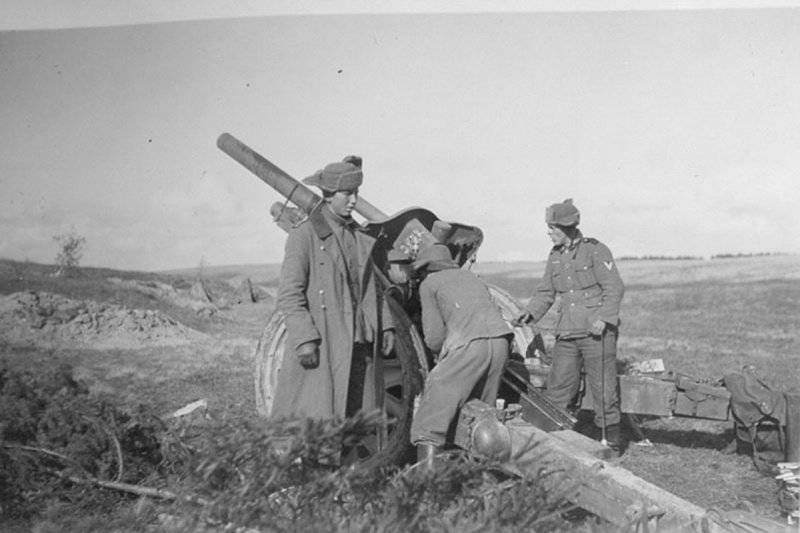
Combat application
As already noted, deliveries of le.FH18 to the front-line units began in 1935. In the same year, a fundamental decision was made to withdraw the cannons from the divisional artillery. Henceforth, the artillery regiments of the divisions were armed only with howitzers - 105-mm light and 150-mm heavy. It should be noted that this decision did not seem indisputable. On the pages of the specialized press there was a sharp discussion about this. Supporters of guns cited, in particular, the argument that with the same caliber, howitzer shells are significantly more expensive than cannon shells. The opinion was expressed that with the withdrawal of guns, divisional artillery would lose tactical flexibility. Nevertheless, the leadership listened to the opinion of the "howitzer fraction" in an effort to standardize weapons, to avoid multiple types in production and in the military. A significant argument in favor of the howitzers was the desire to provide a fire advantage over the armies of neighboring countries: in most of them, the basis of divisional artillery was made up of 75 — 76 mm caliber guns.
In the pre-war period, each Wehrmacht infantry division had two artillery regiments — light (three battalions of 105-mm howitzers on a horse-drawn thrust) and heavy (two battalions of 150-mm howitzers — one on a hoisted horse, the other motorized). With the transition to wartime, heavy regiments were withdrawn from the divisions. Subsequently, the organization of artillery of the infantry division remained unchanged for almost the entire war: a regiment consisting of three divisions, and in each of them - three four-gun 105-mm howitzer batteries mounted on a horseboard. The staff of the battery is 4 officer, 30 non-commissioned officers and 137 privates, as well as 153 horses and 16 carts.
Ideally, the artillery regiment of the infantry division counted 36 105-mm howitzers. But during the fighting, not every division had such a large number of guns. In some cases, some of the howitzers were replaced with captured Soviet 76,2-mm cannons, in others they reduced the number of guns in the battery from four to three, or replaced some of the howitzer batteries with Nebelwerfer 150 rocket launchers. Therefore, it should not come as a surprise that, despite the massive production of le.FH41, it could not completely oust its predecessor, the howitzer le.FH18, from the troops. The latter was used until the end of the Second World War.
The organization of artillery regiments of the Volksgrenadier divisions, which had been formed since the summer of 1944, differed somewhat from the standard. They included only two divisions of two-battery, but the number of guns in the battery was increased to six. Thus, the Volksgrenadier Division had 24 105-mm howitzers.
In motorized (from 1942 - panzergrenadier) and tank divisions, all artillery was mechanically driven. The four-gun motorized battery of 105-mm howitzers required significantly less personnel - 4 officers, 19 non-commissioned officers and 96 privates, and a total of 119 people against 171 in a horse-drawn battery. The vehicles included five half-track tractors (of which one was a spare) and 21 vehicles.
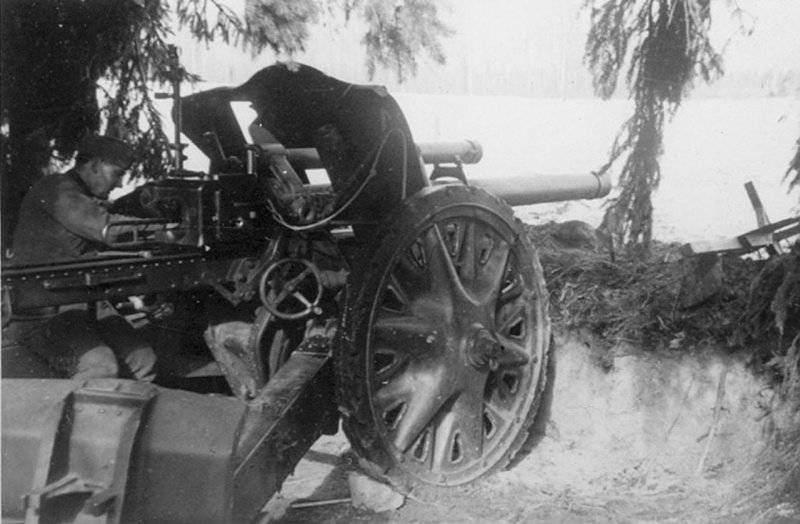
The artillery regiment of the motorized division on the eve of the war and during the Polish campaign corresponded to the structure of an infantry division regiment - three three-battery divisions (36 howitzers). Later it was reduced to two divisions (24 guns). The tank division initially had two divisions of 105-mm howitzers, since its artillery regiment also had a heavy division (150-mm howitzers and 105-mm guns). From 1942, one of the light howitzer battalions was replaced by a self-propelled artillery battalion with Vespe and Hummel installations. Finally, in 1944, the only remaining division of light howitzers in the tank divisions was reorganized: instead of three four-gun batteries, it included two six-gun batteries.
In addition to divisional artillery, part of the 105-mm howitzers entered the RGC artillery. For example, in 1942, the formation of separate motorized divisions of 105-mm howitzers began. Three battalions of light howitzers (a total of 36 guns) were part of the 18 Artillery Division — the only compound of this type in the Wehrmacht that existed from October 1943 until April 1944. Finally, when the 1944 began to form in the fall of the Folksartillery corps, One of the variants of the states of such a corps provided for the presence of a motorized division with 18 le.FH18.
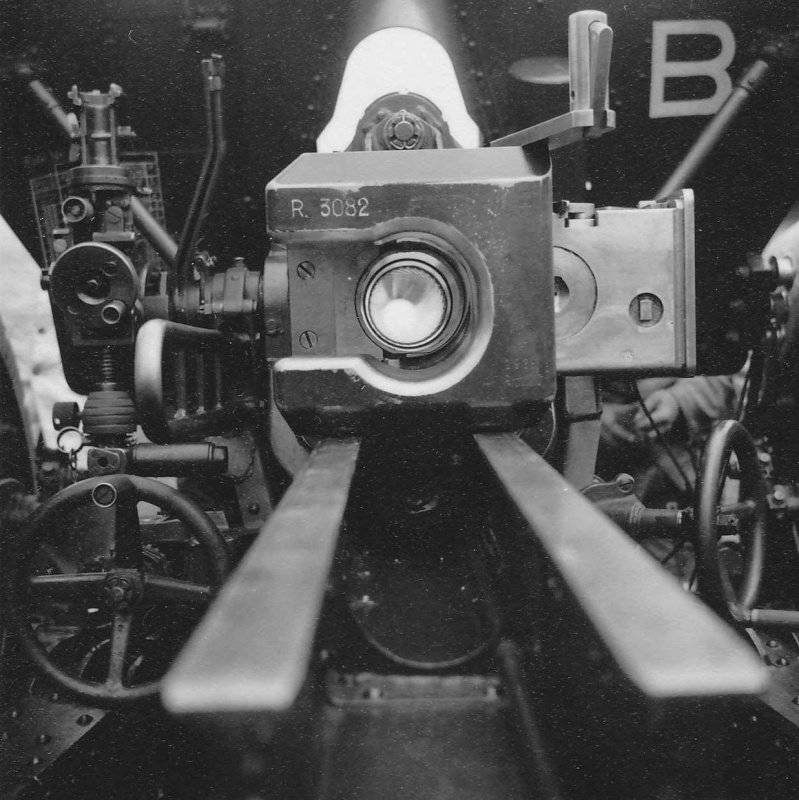
The standard type of tractor in the 105-mm howitzer motorized divisions was a three-ton semi-tracked tractor Sd. Kfz.11 (leichter Zugkraftwagen 3t), rarely used five-ton Sd. Kfz. 6 (mittlerer Zugkraftwagen 5t). Formed with 1942, the divisions of the RGCs were equipped with RSO tracked tractors. This machine, simple and cheap to manufacture, was a typical "ersatz" of wartime. The maximum towing speed of the howitzers was just 17 km / h (versus 40 km / h for semi-tracked tractor units). In addition, the RSO had only a double cabin, so the howitzers were towed with the front end on which the calculation was located.
As of September 1 1939, the Wehrmacht numbered 4845 light howitzer caliber 105 mm. The bulk fell on le.FH18 guns, with the exception of a certain number of old le.FH16 systems, as well as former Austrian and Czech howitzers. By 1 April, 1940, the fleet of light howitzers increased to 5381 units, and by 1 June 1941, to 7076 (the le.FH 18M systems are already included in this number).
By the end of the war, despite the huge losses, especially on the Eastern Front, the number of 105-mm howitzers continued to be very large. For example, the Wehrmacht had 1 howitzers on 1944 in May, and on 7996 in December, 1 (although in both cases not only towed guns, but also Vespe self-propelled 7372-mm howitzers) were taken into account.
In addition to Germany, le.FH18 and its variants were in service with several other countries. We have already mentioned the supply of modified guns to Holland. The rest of the foreign customers received standard howitzers. In particular, the baptism of the Le.FH18, like many other types of weapons and military equipment, took place in Spain, where a number of these weapons were delivered. Even before the war, such howitzers were delivered to Hungary, where they received the designation 37M. During the war, le.FH18 went to Finland and also to Slovakia (the latter received 1943 howitzers le.FH1944 for horse-powered batteries and eight le.FH45 / 18 for motorized batteries) in 18 — 40.
After the war, the howitzers le.FH18, le.FH18M and le.FH18 / 40 remained in service in Czechoslovakia, Hungary, Albania and Yugoslavia for a long time (until the beginning of the 1960s). Interestingly, in the artillery units of the same Hungary until the end of the 1940-s. used horse traction. In Czechoslovakia, the German howitzers were modernized, putting the le.FH18 / 40 barrel on the carriage of the Soviet 122-mm howitzer M-30. Such an instrument was designated le.FH18 / 40N.
Overall rating
The light howitzer le.FH18 and their improved versions, no doubt, played a huge role in the fighting of the Wehrmacht during the Second World War. It is difficult to name at least one battle in which the battalions of these guns would not take part. The howitzer was distinguished by its reliability, high survivability of the barrel, which comprised 8 — 10 thousand shots, and ease of maintenance. At the beginning of the war, the ballistic characteristics of the gun were satisfactory. But when the Wehrmacht encountered more modern enemy weapons (for example, the English 87,6-mm howitzer cannons and the Soviet 76,2-mm divisional guns), the situation was improved by deploying the mass production of howitzers le.FH18M, and then le.FH18 / 40.
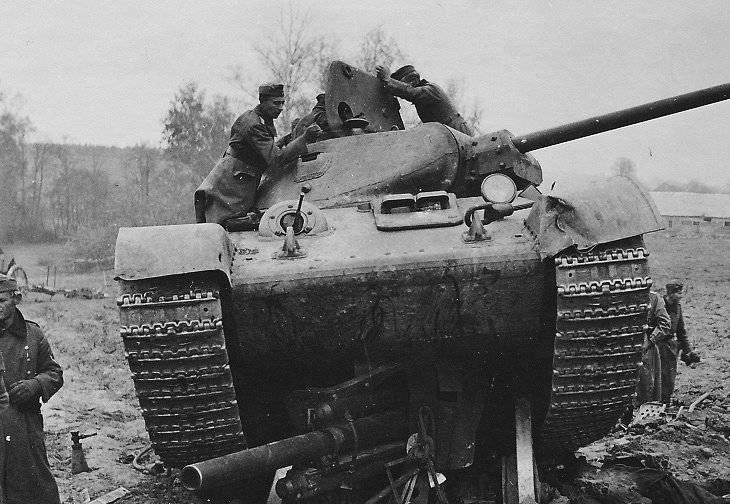
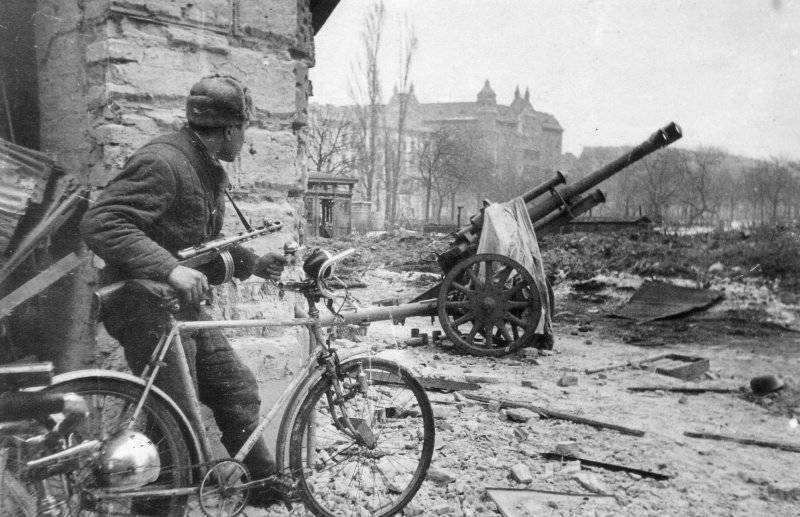
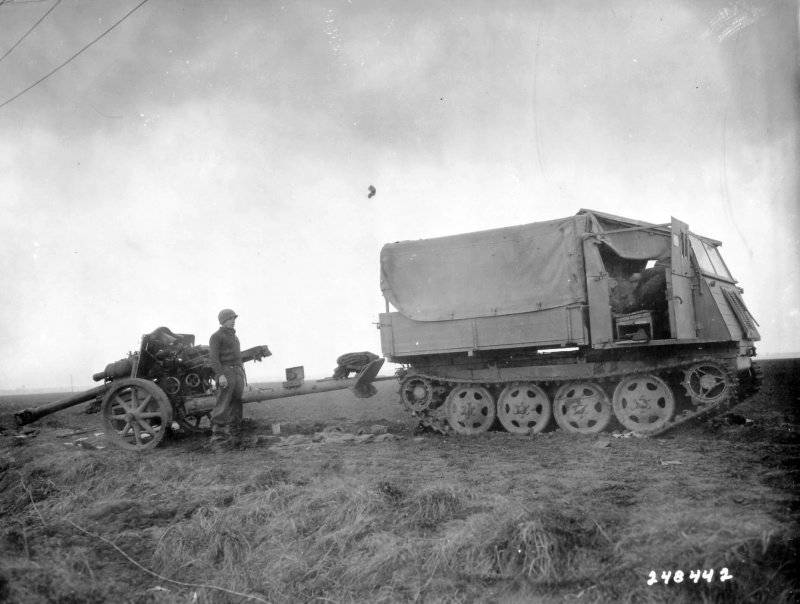


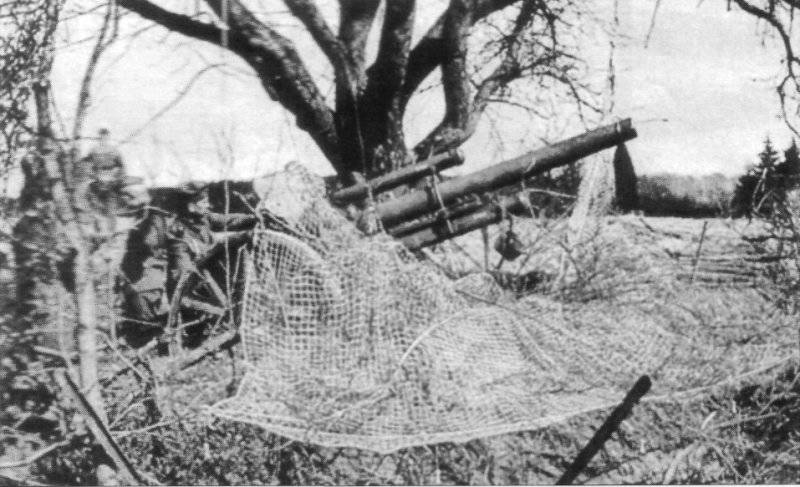

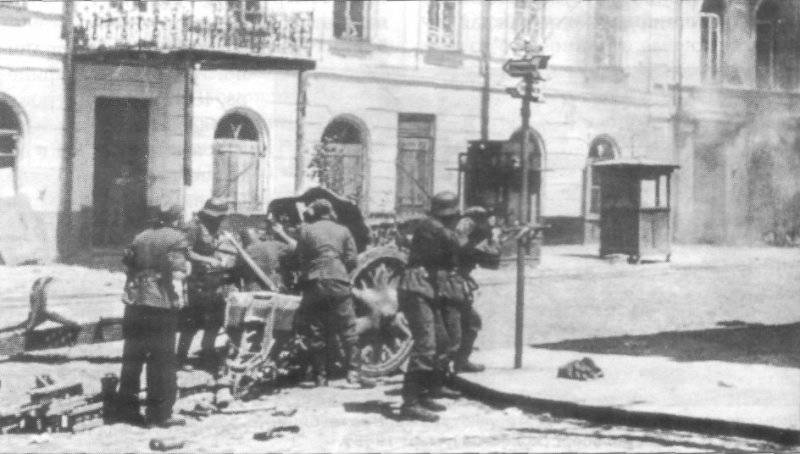
Information